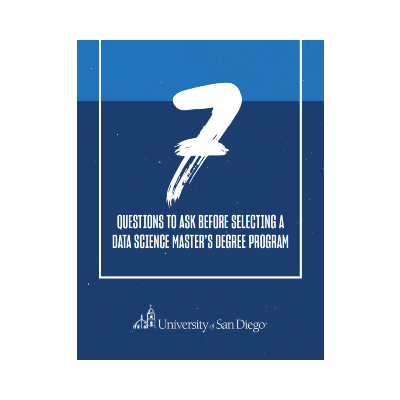If you aspire to work in a career that centers around data, there is no shortage of available positions as the job market continues to boom with the demand of skilled professionals far exceeding supply. But you might not be aware of the distinct differences between all the data jobs — specifically two of the most popular positions, data analyst and data scientist, both of which top The Muse’s list of eight data jobs you should consider. Liveabout.com also ranks data scientist #1 and data analyst #3 on its list of Top 7 Big Data Jobs.
Well-known companies and organizations across a variety of industries are hiring for both of these in-demand positions. They include:
- Chewy
- Amazon
- Fidelity Investments
- Spotify
- Hulu
- Zillow
- Netflix
- Apple
- Uber
- Major League Baseball
Now, let’s explore the similarities and differences between the two and find out which data position may be the right fit for your professional skills and career goals.
What Does a Data Scientist Do?
Data scientists typically possess a combination of coding, mathematical, analytical and machine learning skills. Generally speaking, their work involves using data expertise to create impact for the organizations they work for. Responsibilities typically include:
- Developing an understanding of business problems or challenges
- Acquiring and preparing data they believe can provide insight into the problems
- Conducting exploratory analysis
- Engaging in data modeling and visualization
- Deploying the model to produce insights that can help guide company strategy
People who work in data science tend to be highly educated with about 93% of data scientists and AI professionals holding an advanced degree, according to a survey by recruiting firm Burtch Works.
As SAS explains, “Data scientists are a new breed of analytical data expert who have the technical skills to solve complex problems — and the curiosity to explore what problems need to be solved. They’re part mathematician, part computer scientist and part trend-spotter.”
The position of data scientist continues to be a popular one. It ranks #3 (out of 10) on U.S. News & World Report’s list of Best Technology Jobs, #6 (out of 10) on the list of Best STEM Jobs and #6 on the list of 100 Best Jobs. Data scientist was also listed as #3 on Glassdoor’s list of 50 Best Jobs in America for 2022 with a job satisfaction rating of 4.1/5.
According to Robert Half, “recruiting for the tech sector is especially active, as employers are hiring technology professionals at or beyond pre-pandemic levels.”
What Does a Data Analyst Do?
A data analyst is a person who finds meaningful patterns in data by looking at the past to help make predictions about the future. While data science has been a popular focus within the last few years, it seems data analytics is making a comeback.
“We almost took our eye off the analytics ball because a lot of people got excited about machine learning and AI and suddenly went, ‘Ooh, we have to do all these wonderfully whizzy-bang things,’” explained Caroline Carruthers, director at consulting firm Carruthers and Jackson, in a recent CIO article. “We forgot that actually there is a tremendous amount of value organizations get from analytics. We’re starting to move back to how we can really drive analytics throughout our organizations.”
In some cases, data analysts may be labeled as information scientists depending on the company, according to Investopedia. The good news is that these positions can be found in practically every industry, including finance, insurance, manufacturing, management, information technology, retail and more. As Coursera points out, however, more than 75% of data job openings are in finance and insurance, professional, scientific, technical services, information technology, management and manufacturing.
Data analyst was listed as #35 on Glassdoor’s list of 50 Best Jobs in America for 2022 with a job satisfaction rating of 4/5.
Data Scientist Job Requirements
Data scientists can come from a variety of fields, including engineering, math, computer science, business or social sciences. They typically need to have solid knowledge of statistics, quantitative reasoning and computer programming skills, according to U.S. News & World Report. Good communication skills are also important in order to convey findings. The exact desired skills may vary depending on the position, but the “common denominators” are typically statistics and computational analysis.
Machine learning skills are also desired because they can help with pattern identification, according to Robert Half. In addition, experience with programming languages (such as Python or Java) and tools like Tableau are also key.
When it comes to education, many companies and organizations prefer a Ph.D. in a related area, such as math or computer science. Other qualifications, according to job resource Springboard, include interpersonal skills, data visualization and business strategy.
Data Analyst Job Requirements
Data analysts often require technical experience with data models, database design development, data mining and segmentation techniques, according to Workable. They must have knowledge of statistics, strong analytical skills and experience with reporting packages.
CIO lists the most-in demand tech skills for data analysts, which include:
- SQL
- Microsoft Excel
- Tableau
- Python
- R
- SAS
- Microsoft PowerPoint
- Microsoft SQL Server
- Oracle
- Microsoft Power BI
In terms of education, a bachelor’s degree in a related field — such as technology, computer science, math or statistics — is often required, according to Springboard.
Just like with data scientists, communication skills are extremely important since “data analysts frequently need to engage with the business to understand business objectives and gather requirements,” according to CIO.
If you’re searching for a data analyst position, you may come across different roles, including:
- Business analyst
- Management reporting
- Corporate strategy analyst
- Compensation and benefits analyst
- Budget analyst
- Insurance underwriting analyst
- Actuary
- Sales analytics
- Web analytics
- Social media data analyst
Differences in Career Paths
Now that we’ve outlined each career, let’s closely examine the differences.
Here’s one overview from CIO: “Data analysts seek to describe the current state of reality for their organizations by translating data into information accessible to the business. They collect, analyze, and report on data to meet business needs. The role includes identifying new sources of data and methods to improve data collection, analysis, and reporting. Data scientists, on the other hand, are often engaged in long-term research and prediction, while data analysts seek to support business leaders in making tactical decisions through reporting and ad hoc queries.”
Coursera puts it this way: Data analytics work with structured data to solve problems using tools and programming languages, software and statistical analysis. Data scientists “often deal with the unknown by using more advanced data techniques to make predictions about the future.”
In terms of education, most data analyst positions require at least a bachelor’s degree in a related field; data scientists, on the other hand, typically have a master’s degree or Ph.D. in data science, information technology, math or stats, according to Coursera. That being said, many data analysts become data scientists after gaining experience, sharpening their skills and obtaining an advanced degree.
How Much Does a Data Scientist Make?
The exact amount will vary depending upon your experience, where the job is located, your education, the position level and your responsibilities. Indeed lists the average base salary as $144,481. According to U.S. News & World Report, data scientists make a median salary of $98,230.
Location can also make a big difference. For example, the average base salary for a data scientist in San Francisco is $163,048 and the average base salary for a data scientist in Boston is $124,532. It’s important to note, however, that these numbers are updated frequently.
How Much Does a Data Analyst Make?
Data analyst positions are available in practically every industry, but according to Coursera, the industry in which you choose to work can definitely impact your pay. “The industries where demand for data professionals is highest tend to be the same industries that pay the most on average.” (As previously noted, more than three-quarters of job openings are in finance/insurance, IT, management, manufacturing, professional and scientific job sectors.)
According to Glassdoor, the average annual base pay for a data analyst in the U.S. is $71,840. PayScale lists an average salary of $63,442 with Indeed a bit higher at $70,676.
Working in a large city can also have an impact on salary; cities like San Francisco, New York, Boston and Washington, D.C. may often have higher salaries due to cost of living. For example, the average base salary for a data analyst in Boston is $83,313, whereas the average base salary in San Francisco is $106,152.
How to Choose What’s Right For You
Though both positions deal with data, there are some distinct differences (as previously detailed), and it comes down to personal preference.
If you prefer math and enjoy the technical aspects of coding and modeling, a data scientist position may be a good choice. If you enjoy numbers, communicating your insights and influencing business decisions, you may be interested in data analytics, according to Coursera.
If you’re interested in obtaining an advanced degree, consider a data scientist position, where it’s typically required.
Take Your Data Career to the Next Level with an Advanced Degree
High-paying career opportunities in data science continue to expand across a variety of industries. An advanced degree can position you for success and provide a competitive edge in the growing job market.
The University of San Diego — a highly regarded industry thought leader and education provider — offers two innovative master’s degree programs designed for data professionals: the Master of Science in Applied Artificial Intelligence and the Master of Science in Applied Data Science. Please contact us to speak with an enrollment advisor or to request more information.




